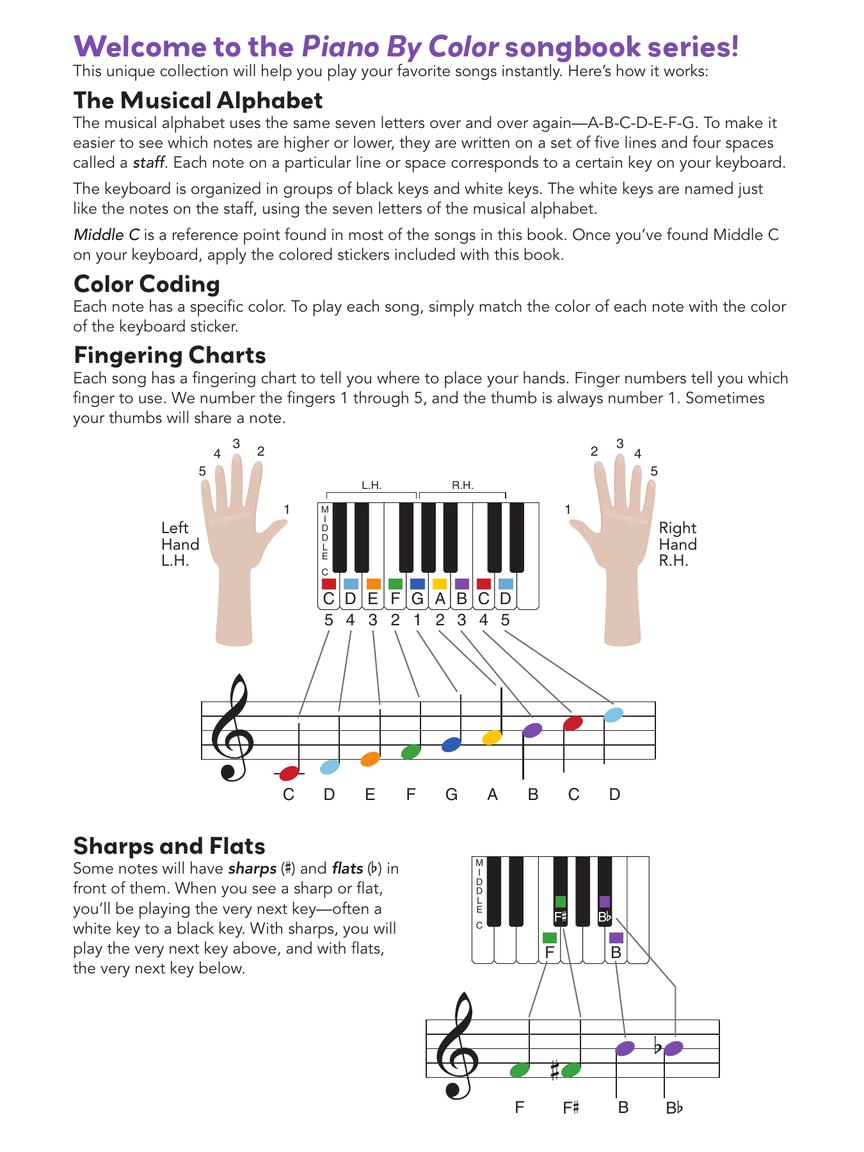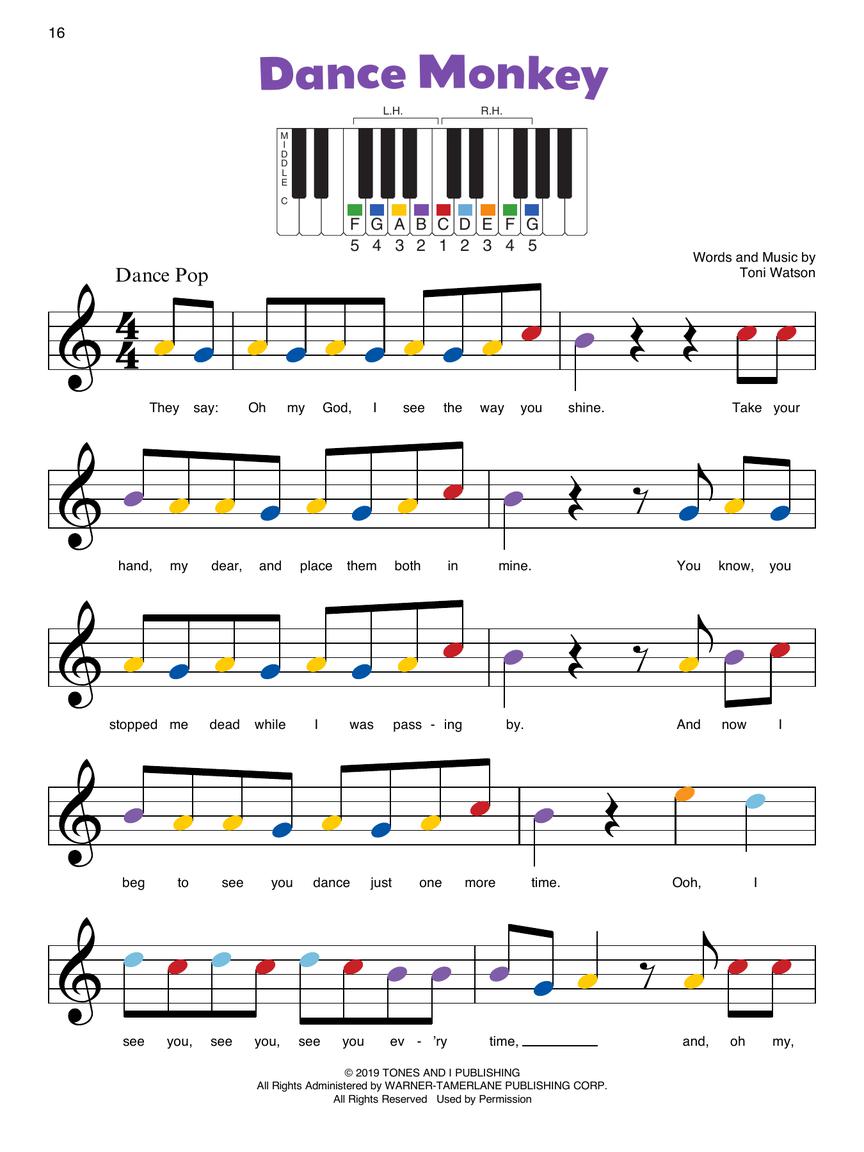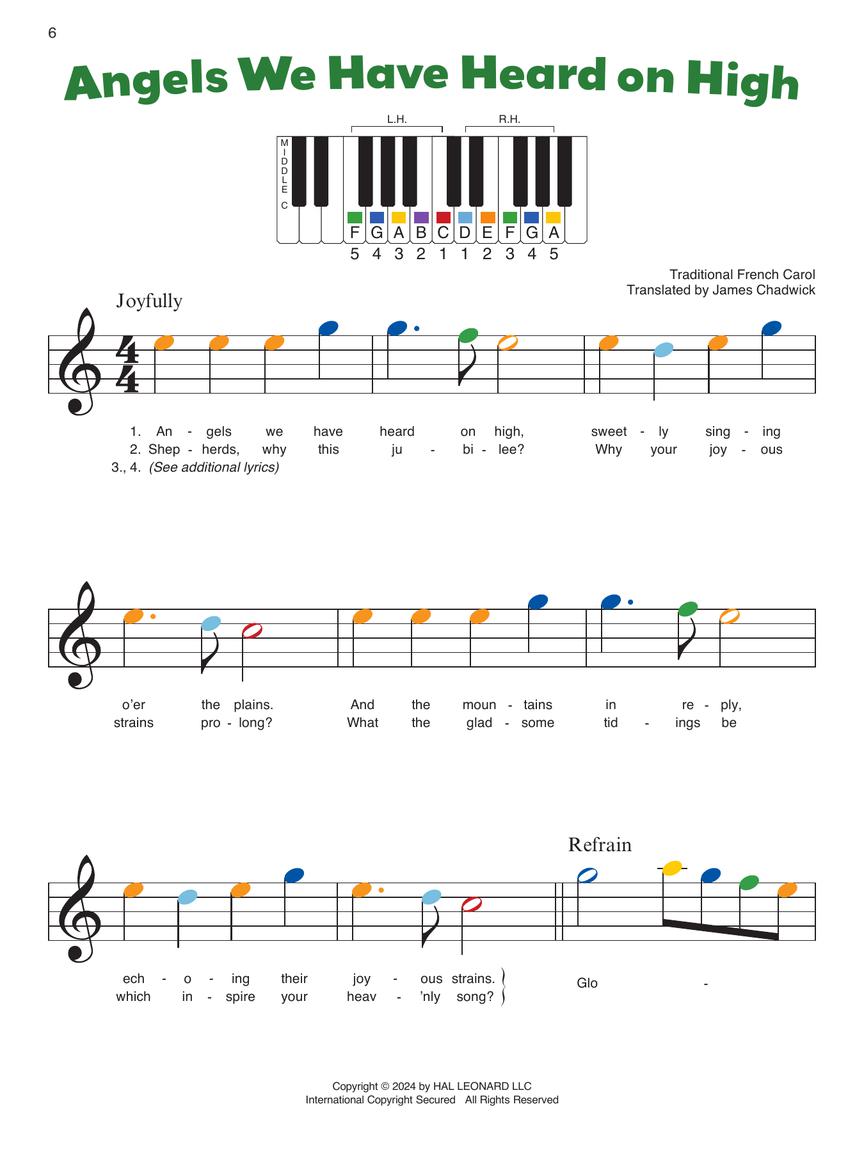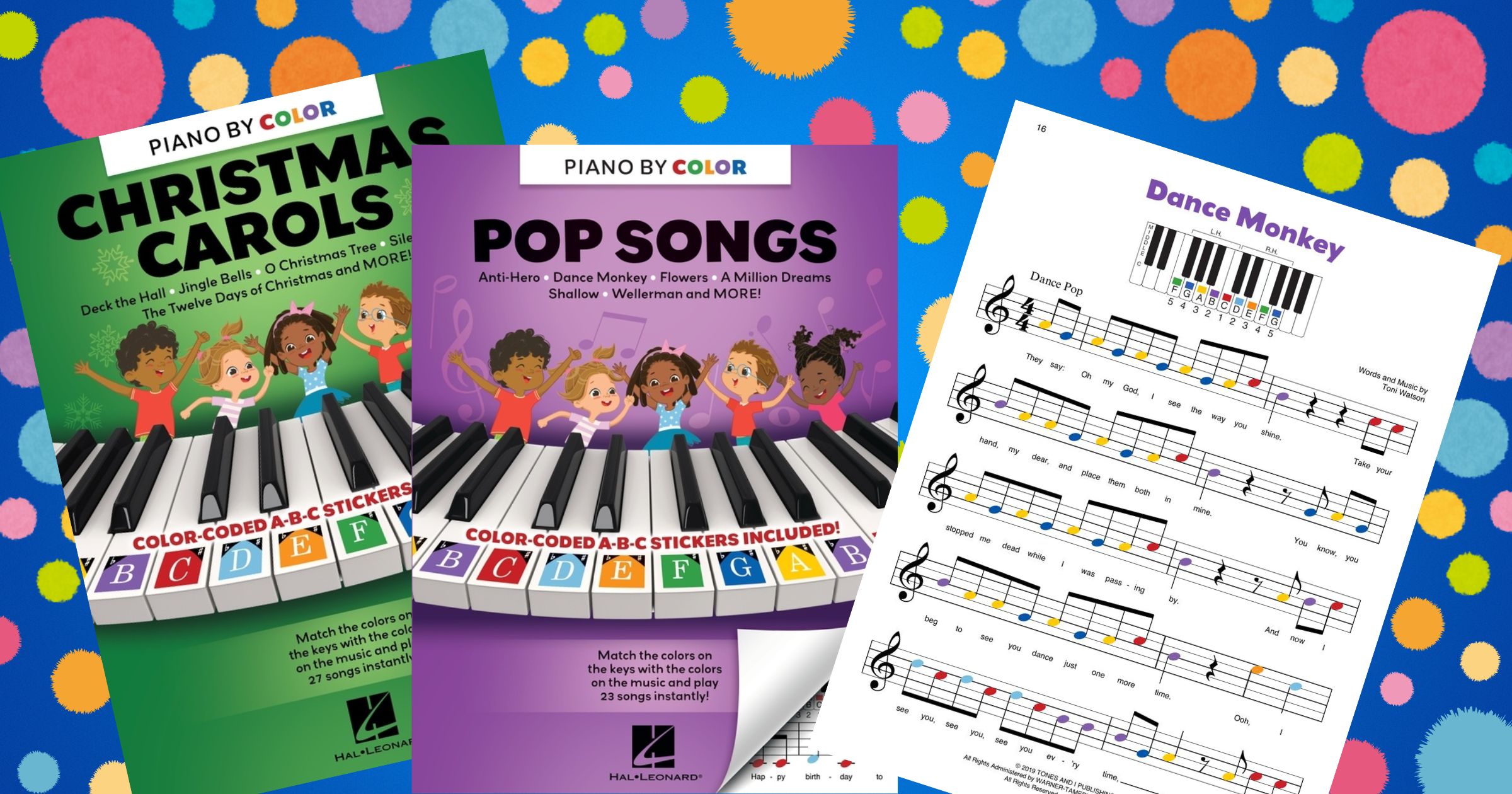Colour coding sheet music is nothing new. Teachers have been doing it for decades – even my own teacher used to highlight entire sections of music to help me break down a piece into the ‘pink’ and ‘blue’ sections. Across various research, students with various learning needs including dyslexia, autism or even just very young beginners who cannot grasp the concept of the music ‘language’ yet have been seen to benefit from some kind of colour coding in the music.
Introducing Piano by Color – a new series that saves you having to bust our the highlighters yourself and even comes with some handy keyboard stickers. At the time of this review, there are two books in the series – Pop Songs and Christmas Carols.

The book begins by explaining how the musical alphabet works within this context. Each note has a specific colour, and that colour remains the same across all pieces and both books. At the back of the book there are corresponding stickers displaying the pitch and colour of the note, that you can stick onto the base of each key on the piano. At the beginning of each piece, there is a guide to show you where you ‘home keys’ are and always includes the letter name and colour for each note. There aren’t any stickers for sharp/flat keys, but in the corner of each sticker there is an indication of the sharp and flat that lies either side of the natural note.
One might note that the colours are not in ‘rainbow’ order. Although there is no explanation in the book as to how they came to this colour pattern, my assumption is that for some students colours like yellow and orange side by side by be difficult to decipher. Research conducted by Demirel (1) concluded that the best way to approach a colour system like this is to first introduce the colours without referencing a music staff. Rather, he suggested using block colours to override any pre-existing colour associations students may have with notes, and simply making patterns for them to play first, before moving to the second stage of introducing coloured music notation.
Using visual aids to read music isn’t a new concept. At the beginning of this I mentioned various research pertaining to the study of music and colour. Solis (2) found this method to be beneficial to children who have reading difficulties such as dyslexia. Going back to the early days of the Greeks, Plato had his own “music of spheres” and Aristotle developed a sort of colour-music formula (despite ‘the rainbow’ not being a common concept back then). According to some sources, Issac Newton split the rainbow prism into seven sections because there are seven tones in the keyboard scale. When we were in primary school, many of us were taught colour association with images; apple=red, grass=green etc. So the use of colour when it comes to teaching music really does have a whole lot of academic weight behind it.

Perhaps the best method is to use this as part of a three-part process: introduce the colours, introduce coloured notation, then present the notation without the colours (to avoid reliance on them).
However if you find that a student with dyslexia or similar finds this style of music engraving to be an invaluable tool to assist with pattern recognition, perhaps continuing to use methods of colour coding beyond this level may encourage further success on the instrument. If “traditional” music notation doesn’t work for your student, this is just one of many ways to progress them beyond that initial stumbling block (assuming you wish to proceed with a notation method of teaching at all).
The stickers are very light – so they won’t damage your keyboard. There’s also enough of them to span five octaves, so if you’re only sticker-ing a small sections of the keybed. then you’ve got some spares if you need them.

Song selections in both books feature lots of well-known tunes with simplified rhythms and reduced down to no more than two pages in length. The Pop Songs editions features hits by Adele, Lady Gaga, Taylor Swift, Ed Sheeran and Billie Eilish. The Christmas Carols book has an interesting mix of well-known and lesser known tunes including Deck the Hall, The First Noel, Joy to the World, Silent Night, Up on the Housetop and I Saw Three Ships. The Christmas book also has some very cute images aside the title of some of the pieces.
The books are available to purchase from Hal Leonard Australia or your local music shop.
